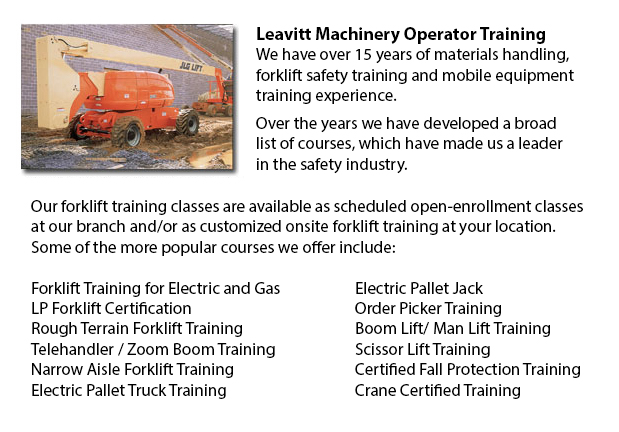
Aerial Platform Training Vaughan - Aerial lift trucks are able to accommodate various duties involving high and tricky reaching spaces. Sometimes used to perform routine upkeep in structures with tall ceilings, prune tree branches, elevate burdensome shelving units or repair phone cables. A ladder might also be utilized for some of the aforementioned projects, although aerial hoists offer more safety and stability when properly used.
There are several distinctive models of aerial lifts accessible, each being able to perform moderately different jobs. Painters will usually use a scissor lift platform, which can be utilized to get in touch with the 2nd story of buildings. The scissor aerial hoists use criss-cross braces to stretch and enlarge upwards. There is a platform attached to the top of the braces that rises simultaneously as the criss-cross braces elevate.
Container trucks and cherry pickers are a different kind of aerial lift. They possess a bucket platform on top of an elongated arm. As this arm unfolds, the attached platform rises. Forklifts utilize a pronged arm that rises upwards as the lever is moved. Boom hoists have a hydraulic arm which extends outward and elevates the platform. All of these aerial lift trucks have need of special training to operate.
Training courses offered through Occupational Safety & Health Association, known also as OSHA, embrace safety strategies, machine operation, maintenance and inspection and machine weight capacities. Successful completion of these education courses earns a special certified certificate. Only properly licensed individuals who have OSHA operating licenses should operate aerial hoists. The Occupational Safety & Health Organization has developed guidelines to maintain safety and prevent injury when utilizing aerial lifts. Common sense rules such as not utilizing this apparatus to give rides and making sure all tires on aerial hoists are braced in order to hinder machine tipping are observed within the guidelines.
Sadly, data show that in excess of 20 operators pass away each year while running aerial hoists and 8% of those are commercial painters. The majority of these incidents are due to improper tire bracing and the lift falling over; therefore many of these deaths were preventable. Operators should make sure that all wheels are locked and braces as a critical security precaution to stop the device from toppling over.
Additional suggestions involve marking the surrounding area of the machine in an obvious manner to safeguard passers-by and to guarantee they do not come too close to the operating machine. It is imperative to ensure that there are also 10 feet of clearance among any utility cables and the aerial lift. Operators of this equipment are also highly recommended to always have on the appropriate safety harness when up in the air.
-
Forklift License Vaughan
Forklift License Vaughan - Getting a forklift certification or forklift license in North America would require the trainee to do hands-on training in addition to classroom instruction. The provincial, federal and state regulatory bodies are responsib... More -
Forklift Ticket Vaughan
Forklift Ticket Vaughan - Forklifts and the pallet jack is meant for just about the same reason. They work to raise and move supplies and goods from one place to another. This however is where the comparison stops though. With the pallet jack, the be... More -
Aerial Lift Certification Vaughan
Aerial Lift Certification Vaughan - Aerial Lift Certification is for individuals who need an in-depth understanding of aerial lift safety. Operators and inspectors, supervisors, maintenance workers and construction craftsmen should perform a certific... More -
Manlift Certification Vaughan
Manlift Certification Vaughan - The Manlifts and Elevated Platforms course provides training on the rules, regulations and proper application of safe operating measures and work practices included in everyday activities for those who work making use... More -
Heavy Equipment Training Vaughan
Heavy Equipment Training Vaughan - The two most common kinds of heavy equipment training are categorized into the categories of machines; equipment that is fashioned with rubber tires or those with tracks. The tracked vehicle are heavy duty machines... More -
Boom Lift Ticket Vaughan
Boom Lift Ticket Vaughan - Boom lifts are equipment that has a platform that may be lowered or raised to different heights, thus making this piece of equipment an important necessity in a wide variety of professions. Offered in many different particu... More -
Telehandler License Vaughan
Telehandler License Vaughan - The telescopic handler or telehandler is a frequently used equipment in industrial and agricultural applications. This particular machine is the same in appearance to a forklift and also functions in a similar way, altho... More -
Scissor Lift Training Vaughan
Scissor Lift Training Vaughan - Scissor lifts have to be operated competently to be able to protect the safety of the machinery and the safety of others within the workplace. Operators who are skilled are trained to drive the particular kind of sciss... More

Forklift Training Vaughan
TOLL FREE: 1-888-254-6157
Vaughan, Ontario
forklifttrainingvaughan.com
Email Us
About Us


